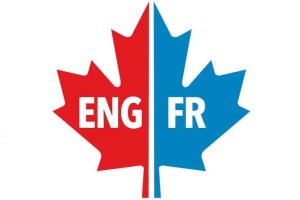Canada continues to update its immigration policies to streamline the process of obtaining permanent residency (PR) and adapt to evolving labor market needs. With these changes, aspiring immigrants must stay informed about the new requirements to ensure they meet the criteria for a successful application. Here’s what you need to know about Canada’s new permanent residency requirements.
Express Entry System Updates
The Express Entry system, which manages applications for economic immigration programs, has seen some significant updates:
Targeted Draws: Canada now conducts targeted Express Entry draws, selecting candidates based on specific attributes such as occupation, language proficiency, and educational background. This shift is intended to address specific labor shortages.
Higher CRS Scores: Candidates applying through the Express Entry system are now required to achieve higher Comprehensive Ranking System (CRS) scores. This means that applicants need to focus on improving their language test results, gaining additional work experience, or securing a provincial nomination to boost their CRS scores.

Language Requirements
Language proficiency continues to be a critical factor in securing permanent residency. In recent updates, Canada has:
Raised Language Benchmark Levels: Applicants must meet higher Canadian Language Benchmark (CLB) scores, particularly for those applying under skilled worker categories. Achieving high scores in either English or French tests (IELTS, CELPIP, or TEF) is essential to strengthen an application.
French-Speaking Candidates Advantage: Canada is giving greater preference to French-speaking applicants, especially those looking to settle outside Quebec. Bilingualism or strong French language skills could significantly boost an applicant’s chances of receiving an invitation.

Changes in Provincial Nominee Programs (PNPs)
Canada’s provinces and territories have their own specific immigration programs, known as Provincial Nominee Programs (PNPs), which allow them to nominate individuals for PR based on local labor market needs. Recent updates include:
Occupation-Specific Invitations: Some provinces now issue invitations to candidates with specific in-demand occupations. This means that if your skills align with a province’s labor market needs, you stand a better chance of being nominated.
New Streams: Several provinces have introduced new immigration streams to target workers in sectors such as technology, healthcare, and agriculture.
Proof of Funds Requirement
Applicants are required to show they have enough financial resources to support themselves and their families once they arrive in Canada. Recent updates have increased the minimum amount of proof of funds required for certain immigration programs. It’s essential to check the latest figures based on the size of your family and ensure you meet this financial criterion.

Educational Credential Assessment (ECA)
For those applying through economic programs like the Federal Skilled Worker Program, the Educational Credential Assessment (ECA) remains a requirement. This evaluation ensures that your foreign education is equivalent to a Canadian degree or diploma. The process has been updated to recognize more international institutions, making it easier for some applicants to obtain their ECA.
Permanent Residency for Caregivers
The caregiver immigration programs have undergone modifications as well, with a focus on ensuring a pathway to PR for those providing essential services. These changes include:
- Clearer PR Pathways: The new policies provide a clearer route for caregivers, allowing them to apply for PR after completing two years of eligible work in Canada.
- Family Reunification: Caregivers can now bring their family members to Canada on a work or study permit while they complete their requirements for PR.

Biometric Requirements
Canada has expanded its biometric collection process, which includes fingerprinting and a photo. Now, all PR applicants must provide biometrics, regardless of the program they’re applying through. This requirement applies to applicants from all countries, with certain exemptions for individuals already in Canada.
CONCLUSION
Canada’s new permanent residency requirements reflect the country’s evolving economic needs and commitment to attracting skilled immigrants. If you’re planning to apply for PR, it’s crucial to stay updated on these changes and prepare your application accordingly. Whether through Express Entry, a Provincial Nominee Program, or a caregiver pathway, understanding the new rules will improve your chances of success.



